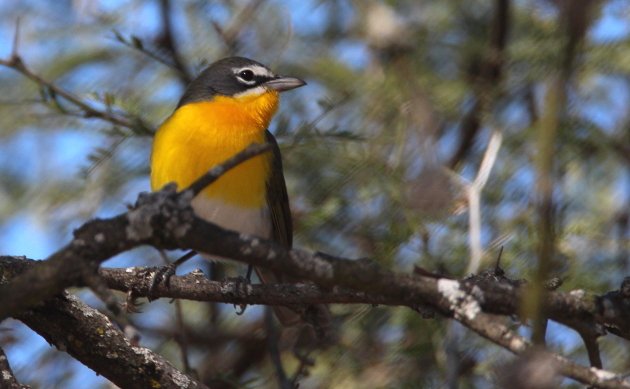
I’m guessing that most people these days communicate on social media through one or more chats. I myself am on several. But only birders know that you can communicate on a chat about… Chats.
Back in 2013, as I was gradually getting back into birding, I found myself trying to ID a tiny bird that had visited my garden. (It turned out that my ancient Aves de México guide, by Roger Tory Peterson, only showed what was then considered the eastern race of the White-collared Seedeater, and my bird was of what was then considered the western race, which has now been split and named the Cinnamon-rumped Seedeater. Adorable birds, but that’s another story.) As I searched the Internet for answers, I had the great good luck to happen across a forum of national birders, who not only gave me the answers I sought, but received me into their community. Over the years, as the online forum gradually and inevitably evolved into a WhatsApp chat, I found myself forming significant friendships with these birders. At least ten have come to Morelia, to visit my best sites. Several have stayed in our home, and of course, invited us to their own homes. In a strange twist of fate, I even finally met the chat’s founder and monitor in Madrid, where we enjoyed a morning of birding, because we happened to both be in that Spanish city at the same time.
Last week, I went birding with Jonathan, one of my chat friends. Jonathan is a biologist from the birding Mecca of San Blas, but now lives in Ensenada, and works with a shorebird monitoring project there. His wife, however, is from Morelia, so at least once a year I get to take him to my sites. This time, we went to Paso Ancho, my favorite site for Tierra Caliente (Hot Country) endemics. And wouldn’t you know it? We had a most excellent Chat!
If you are among our North American readers, there is a very good chance you are acquainted with the Yellow-breasted Chat, because its range extends across most of the United States, and parts of Canada. This Chat winters along the coast of Mexico and throughout Central America. (You may not know that Mexico is part of North, not Central, America.) Nevertheless, I have seen it often in my area, far from the coast, in every month from October through April, and even once in August. The photo above is from north of Morelia, in January; this one is from Paso Ancho, in April.
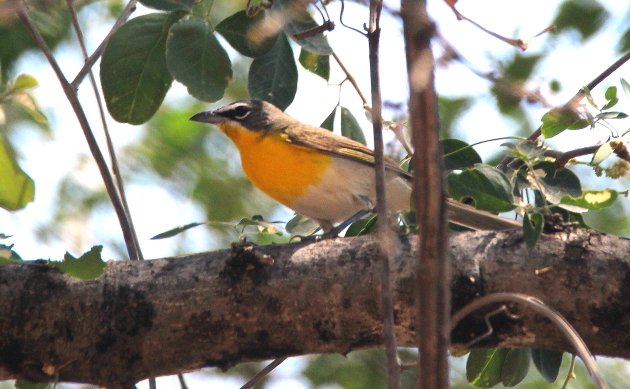
As much as I enjoy the Yellow-breasted Chat — and believe me, I do! — I am very happy to have another Chat within my range. In April of 2019 I went to Paso Ancho with Gerardo, another biologist friend from our birders’ chat, and was astonished to stumble across an almost-mature male Red-breasted Chat. This lifer for both of us would have been our undisputed peak experience for the outing, if it had not been for the majestic sight of a pair of Great Swallow-tailed Swifts that flew near us at eye level. Still, the Chat absolutely tied with them for peak status.
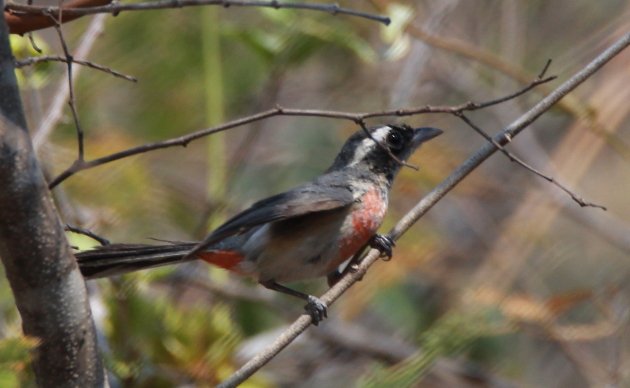
As their name suggests, the Yellow-breasted and Red-breasted Chats were once assumed to be closely related. They were also believed to be part of the Wood Warbler family. Recent evidence, has led to the Yellow-breasted Chat being put into its very own family, Icteriidae; and the Red-breasted Chat has been (along with the very similar but more southerly Gray-throated and Rose-breasted Chats) grouped together with the Cardinals, Grosbeaks, Tanagers, and Buntings that now make up the family Cardinalidae.
Now, it was really special to see that immature Red-breasted Chat in April. But, of course, I wanted more. Each time I returned to Paso Ancho I would look for it, to no avail. Apparently I needed to go with another biologist… from our chat. For last Thursday, when I went back with Jonathan, not only did I see my first adult male, but we also saw a female. Even though only my 300 mm lens was working, I still managed a decent photo of that beautiful male. I’ll have mercy on you all and show Jonathan’s photo of the female, rather than my sub-standard ones.
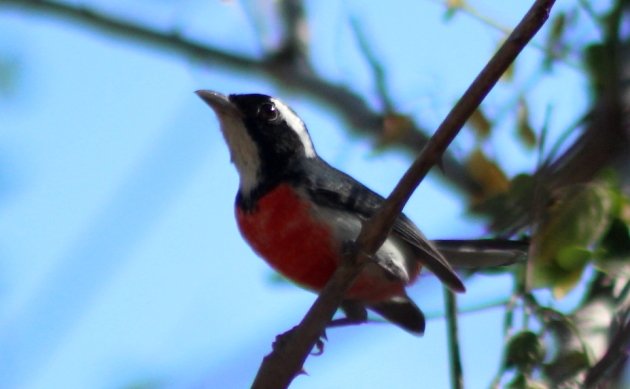
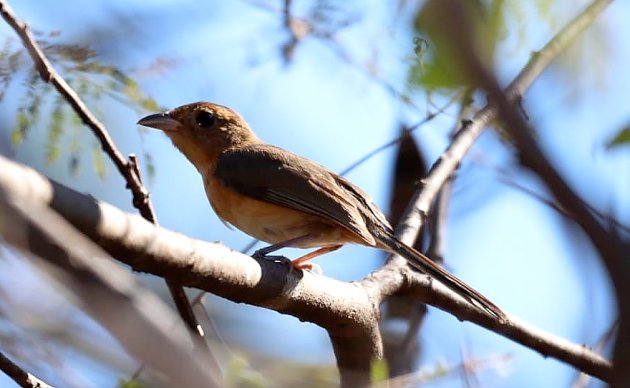
So, if you like brilliantly-colored birds, find a Chat. And if you like meeting great birders, find a chat!











On a similar note (i.e., bad wordplay), somebody told me that a Common Ringed Plover was just seen here in Shanghai (a rare bird here, actually). So now I am thinking – how cool would it be to find a ringed Common Ringed Plover?